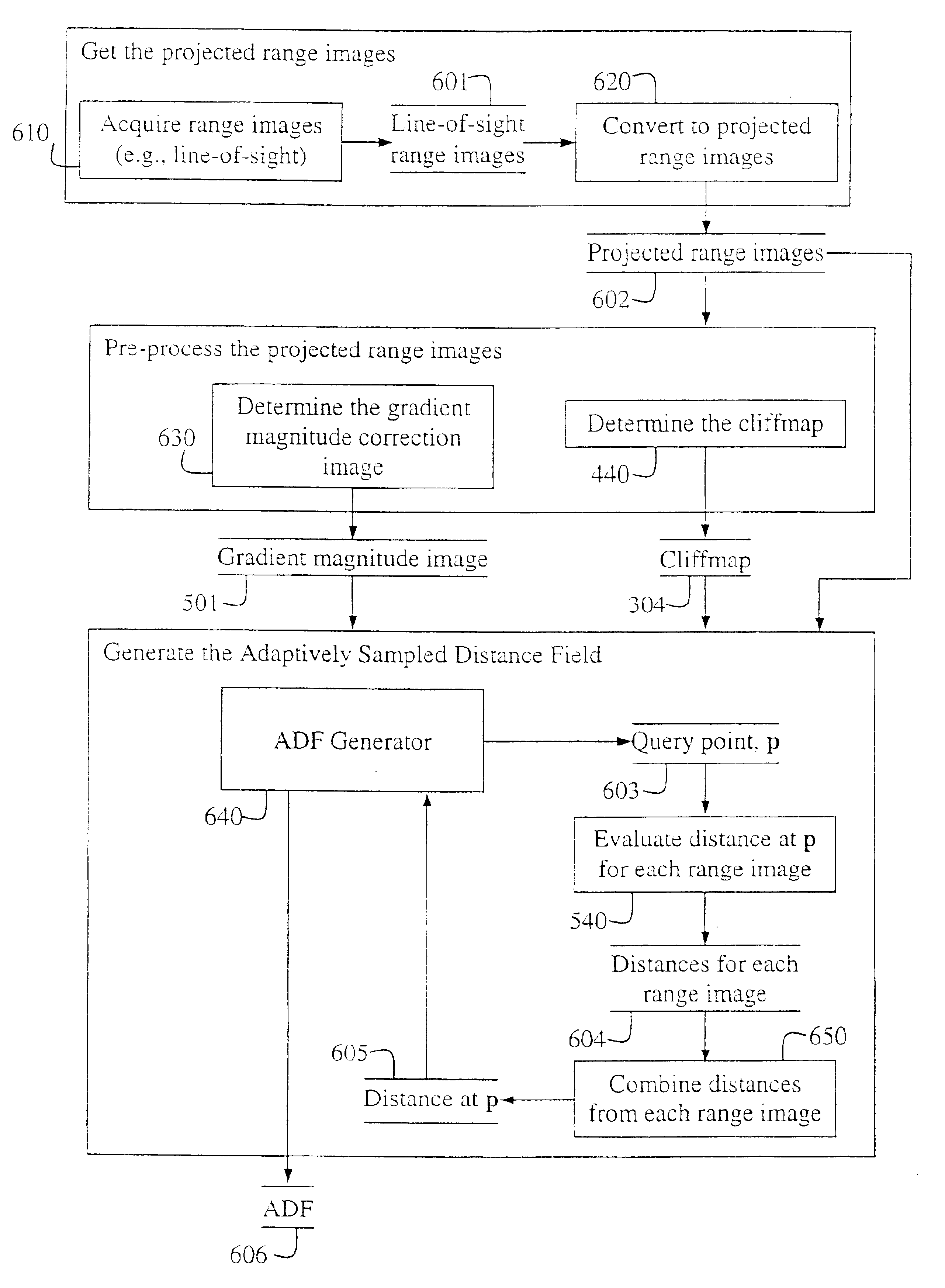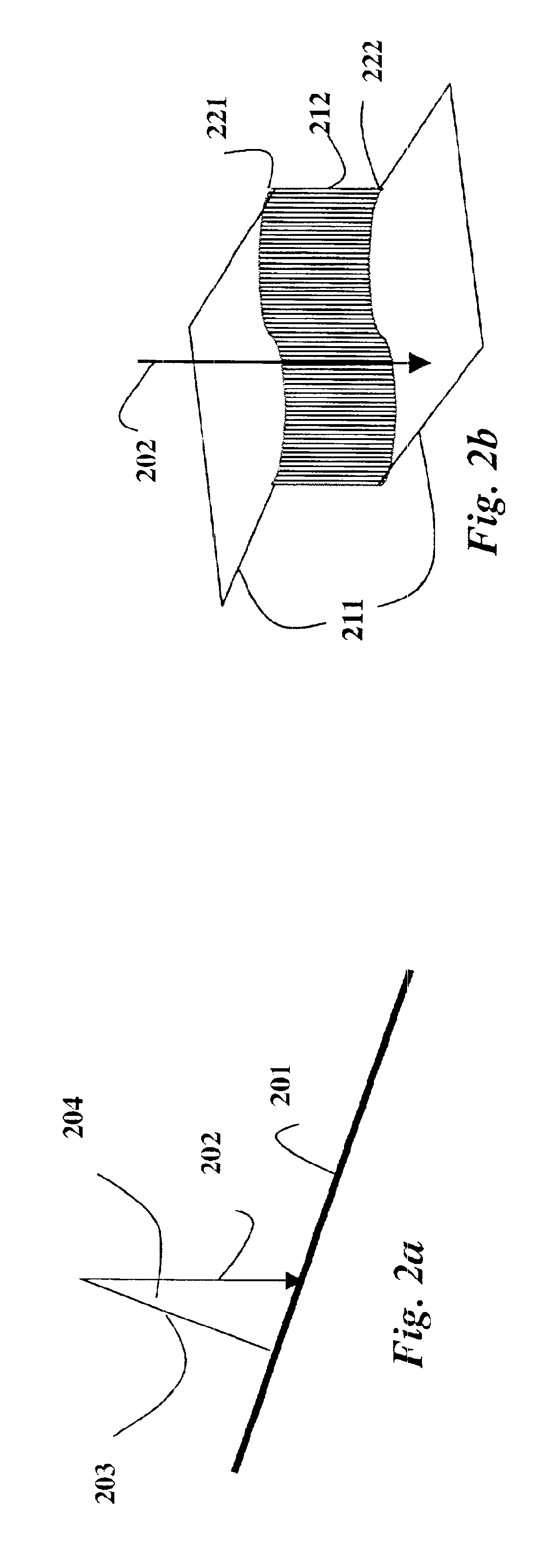Enhancing textured range images using a 2D editor
a 2d editor and textured range technology, applied in the field of computer graphics, can solve the problems of insufficient low-resolution models, difficult and time-consuming task of generating models with high-resolution geometry, and difficult to recreate the complexity and variety of geometric texture, etc., to achieve cost-effective, reduce labor, and simple effect of us
- Summary
- Abstract
- Description
- Claims
- Application Information
AI Technical Summary
Benefits of technology
Problems solved by technology
Method used
Image
Examples
Embodiment Construction
Projected Distances
Two-dimensional (2D) range images provide a 2D grid of line-of-sight distances from a scanner to an object. A line-of-sight distance is measured along a viewing ray from the scanner to the object. In the following description, we assume that each distance value in the range image represents a perpendicular projected distance, where the distance is measured along a ray from the scanner to the object that is perpendicular to the plane of the scanner, also see U.S. Pat. No. 6,262,738 issued to Gibson, et al. on Jul. 17, 2001, “Method for estimating volumetric distance maps from 2D depth images,” incorporated herein by reference, for further details on this problem.
Scanning systems do not always provide projected distances but conversion to this form can be straightforward. As an example, laser striping systems “fan” a laser beam into a plane of laser light so that each scan line of the range image samples line-of-sight distances along rays radiating from the point la...
PUM
 Login to View More
Login to View More Abstract
Description
Claims
Application Information
 Login to View More
Login to View More - R&D
- Intellectual Property
- Life Sciences
- Materials
- Tech Scout
- Unparalleled Data Quality
- Higher Quality Content
- 60% Fewer Hallucinations
Browse by: Latest US Patents, China's latest patents, Technical Efficacy Thesaurus, Application Domain, Technology Topic, Popular Technical Reports.
© 2025 PatSnap. All rights reserved.Legal|Privacy policy|Modern Slavery Act Transparency Statement|Sitemap|About US| Contact US: help@patsnap.com



